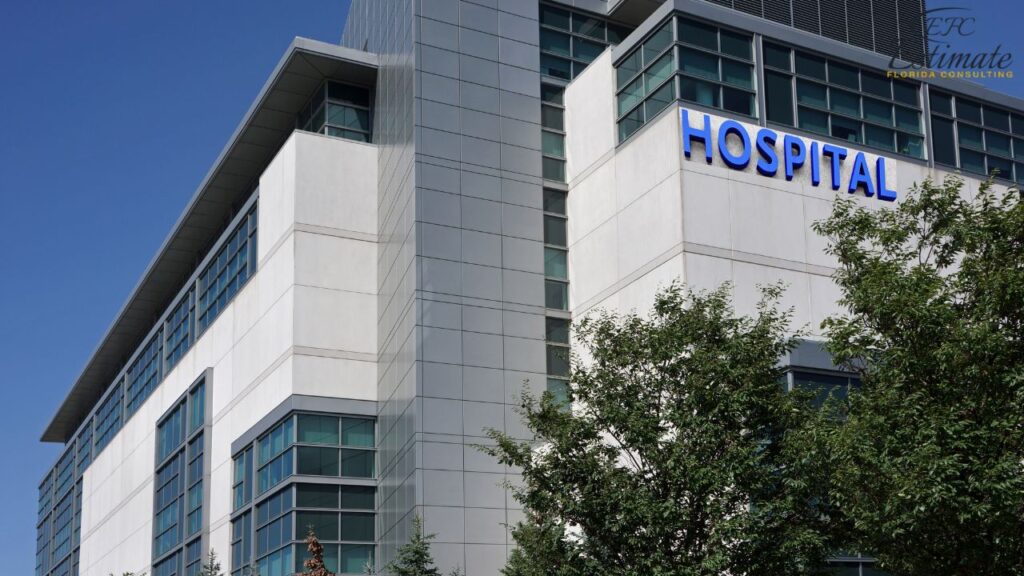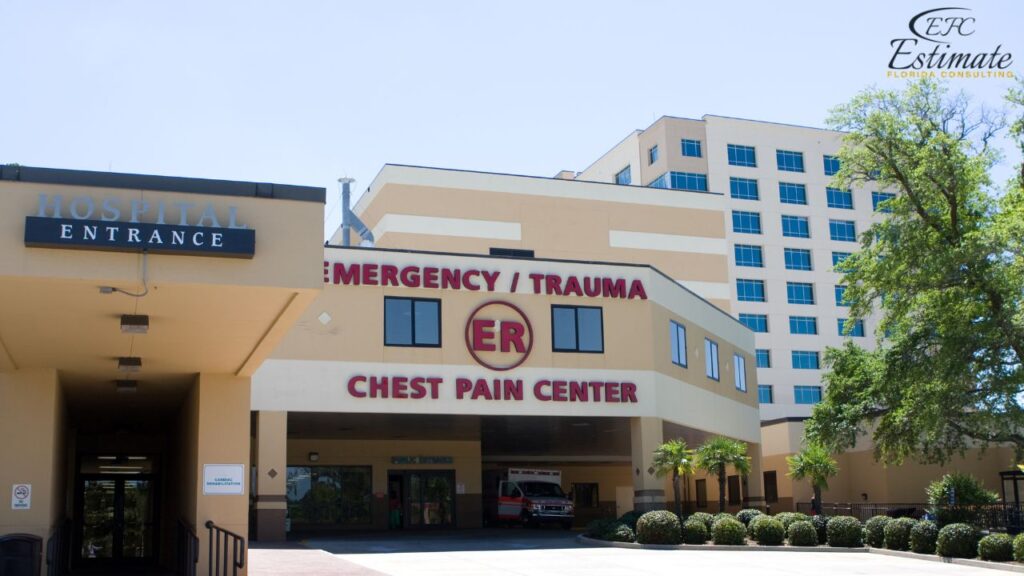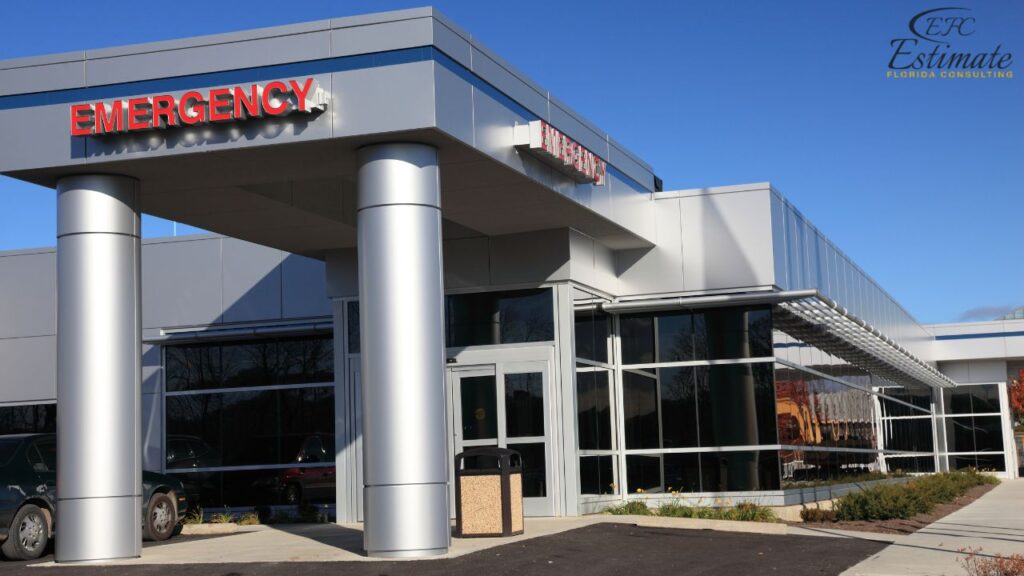How Much Money Does It Take to Build a Hospital?
On average, the cost to build a hospital can range from $390 to $910 per square foot, depending on several factors such as geographical location, facility size, and architectural design. For a typical hospital of around 100,000 square feet, this translates to a total cost between $39 million and $91 million. However, specialized hospitals or those equipped with advanced medical technology can cost significantly more, sometimes exceeding $130 million. Understanding this broad cost range is crucial for budget forecasting and financial planning.

Hospital Size | Estimated Cost Range |
50,000 sq ft | $19.5 million – $45.5 million |
100,000 sq ft | $39 million – $91 million |
200,000 sq ft | $78 million – $182 million |
Major Factors Influencing Hospital Construction Costs
Location
The geographical location of the hospital plays a crucial role in determining construction costs. Urban areas typically face higher land prices, increased labor costs, and more stringent regulatory requirements compared to rural regions. Additionally, local building codes, environmental regulations, and zoning laws can significantly affect costs and the feasibility of construction projects. For instance, a hospital in a metropolitan area may require more elaborate site planning and infrastructure investments to accommodate local health services.
Design and Architecture
The design and architectural complexity of the hospital can greatly influence the overall cost. Hospitals that incorporate advanced technologies, sustainable building practices, and specialized facilities (such as operating rooms, emergency departments, and intensive care units) generally incur higher construction expenses. Architectural considerations, including aesthetics, patient flow, and accessibility, also play a role in determining costs. Collaborating with experienced architects and engineers can help ensure that the design meets functional and regulatory requirements while optimizing costs.
Construction Materials
The choice of construction materials has a direct impact on the budget. High-quality materials for flooring, roofing, and structural components can increase costs significantly. Additionally, hospitals require specialized materials that meet health and safety regulations, which can also add to the overall expense. For example, using energy-efficient materials may lead to higher upfront costs but can result in long-term savings through reduced energy consumption. A thorough analysis of material options can aid in selecting a balance between quality and cost-effectiveness.

Material Type | Estimated Cost Impact |
Standard Materials | Baseline Costs |
High-Quality Materials | +20% to +50% |
Specialized Materials | +30% to +70% |
Construction Timeline
The timeline for hospital construction can vary, often taking anywhere from 18 months to 3 years to complete, depending on the size and complexity of the project. Longer timelines can lead to increased costs due to inflation, labor rates, and financing expenses. Effective project management and scheduling are vital to keeping the project on track and within budget. Implementing a phased construction approach can also help mitigate risks and allow for adjustments based on emerging needs or unforeseen challenges.
Permits and Approvals
Before construction can begin, various permits and approvals are required from local health departments, zoning boards, and other regulatory agencies. These processes can be time-consuming and may incur additional costs related to legal fees and documentation. Thorough preparation and engagement with local authorities can help expedite the approval process. It is essential to allocate sufficient time and resources to navigate regulatory requirements effectively, as delays can lead to increased overall project costs.
Labor Costs
Labor costs are a significant component of the overall budget. Skilled labor is essential for hospital construction, as specialized knowledge is required for areas such as electrical, plumbing, and HVAC systems. Labor rates can vary widely based on the region and the availability of skilled workers. Moreover, the need for certified and licensed professionals in critical areas, such as medical gas installations, can add to labor expenses. Ensuring that a skilled workforce is available throughout the construction process can help maintain quality and safety standards.

Cost Breakdown of Hospital Construction
Land Acquisition
The cost of land can be a substantial part of the overall budget. Urban hospitals may pay higher prices for smaller plots, while rural hospitals might find larger parcels at lower costs. It’s essential to consider location accessibility, proximity to existing healthcare facilities, and potential future expansion when budgeting for land acquisition. Additionally, environmental assessments and site evaluations can incur further expenses but are necessary for identifying any potential issues that could arise during construction.
Site Preparation and Utilities
Site preparation costs include clearing, grading, and installing necessary utilities such as water, sewage, electricity, and gas. This phase can add tens of thousands to millions to the budget, depending on the condition of the land and the requirements for utility installations. Investing in high-quality site preparation can help prevent future maintenance issues and ensure that the facility operates efficiently from the start.
Building Costs
Building costs encompass the actual construction, including labor and materials. This includes foundations, framing, roofing, and interior finishes. Hospitals often require additional structural integrity to support heavy medical equipment and specialized facilities. Careful planning during the building phase is critical to ensuring that the construction meets both current and future healthcare demands while adhering to safety and regulatory standards.
Specialized Medical Equipment
Investing in state-of-the-art medical equipment is crucial for modern hospitals. Costs for specialized medical equipment, such as MRI machines, surgical tools, and patient monitoring systems, can range from hundreds of thousands to millions of dollars, depending on the services offered by the hospital. Planning for these costs should begin early in the construction process to ensure that the necessary equipment is available upon completion of the facility.
Download Template For Hospital Project Breakdown
- Materials list updated to the zip code
- Fast delivery
- Data base of general contractors and sub-contractors
- Local estimators

Furnishings and Fixtures
Beyond medical equipment, hospitals require furnishings and fixtures, including patient beds, waiting room seating, office furniture, and decorative elements. These costs can vary significantly based on the desired quality and design of the furnishings. Hospitals should consider patient comfort and accessibility when selecting furnishings to enhance the overall patient experience while ensuring compliance with safety regulations.
Cost Component | Estimated Cost Range |
Land Acquisition | $1.3 million – $13 million |
Site Preparation | $650,000 – $3.9 million |
Building Costs | $19.5 million – $65 million |
Specialized Equipment | $1.3 million – $13 million |
Furnishings and Fixtures | $650,000 – $2.6 million |
Ongoing Operational Costs
Once a hospital is built, ongoing operational costs must be considered. These costs include staffing, utilities, maintenance, and supplies. Understanding these recurring expenses is essential for ensuring the hospital’s long-term financial sustainability. Developing a comprehensive financial model that accounts for both construction and operational costs can help stakeholders make informed decisions regarding the feasibility and funding of the project.
Funding Options for Hospital Construction
Government Grants and Loans
Many hospitals seek funding through government grants and loans, especially for rural or community hospitals. These funds can provide crucial financial support during the construction process. Understanding the eligibility requirements and application processes for various funding sources is vital for securing financial assistance.
Private Investments
Private investors and healthcare systems may also fund hospital construction. Forming partnerships with local businesses or health organizations can help secure necessary capital. Developing a solid business plan and demonstrating the potential return on investment can attract interest from private investors.
Fundraising Campaigns
Many hospitals engage in fundraising campaigns to support construction projects.

This can include donations from community members, local businesses, and philanthropic organizations. Building strong relationships with the community and communicating the hospital’s mission can encourage contributions and support.
Challenges in Hospital Construction
Regulatory Compliance
Hospitals must adhere to strict health and safety regulations throughout the construction process. Compliance with these standards can introduce additional costs and complexities. Staying informed about current regulations and best practices is essential for ensuring compliance and avoiding potential fines or delays.
Community Engagement
Engaging with the community is vital during the planning and construction phases. Addressing community concerns and incorporating feedback can enhance project support but may also introduce delays and costs. Conducting public meetings and outreach initiatives can help foster a positive relationship with the community and create a sense of ownership and involvement.
Get 5 New Leads Next 7 Days With Our System
- Multi-Family House
- Single-Faimly House
- Modern House
- Duplex
- Ranch House
- Bungalow
Economic Fluctuations
Economic conditions can impact construction costs, particularly through inflation and material shortages. Planning for potential economic fluctuations can help mitigate financial risks. Hospitals should establish contingency budgets and flexible financing options to adapt to changing economic circumstances.
Conclusion
Building a hospital is a complex and costly endeavor that requires a significant financial investment and careful planning. The overall costs can vary widely based on location, size, design, and services offered. By understanding the various factors involved, stakeholders can better prepare for the financial implications of hospital construction and ensure the successful establishment of a facility that meets the healthcare needs of the community. Thorough planning, budgeting, and securing funding are essential to navigate the challenges associated with building a hospital and delivering high-quality healthcare services. Ultimately, the successful completion of a hospital project can have a profound positive impact on community health and well-being.
FAQs
The average cost to build a hospital ranges from $390 to $910 per square foot. This wide range is influenced by factors such as geographical location, facility size, and architectural design.
For a standard hospital size of approximately 100,000 square feet, total costs can range between $39 million and $91 million. Specialized hospitals with advanced medical technologies may exceed $130 million.
The size of the hospital significantly impacts overall costs. Here’s a breakdown of estimated costs based on different sizes:
- 50,000 sq ft: $19.5 million – $45.5 million
- 100,000 sq ft: $39 million – $91 million
- 200,000 sq ft: $78 million – $182 million
Several factors can impact the cost of building a hospital, including:
- Location: Urban areas typically incur higher costs due to land prices, labor rates, and regulatory requirements.
- Design and Architecture: Complex designs, advanced technologies, and specialized facilities increase costs.
- Construction Materials: High-quality and specialized materials can raise the budget significantly.
- Construction Timeline: Longer timelines may lead to increased costs due to inflation and labor rates.
Obtaining the necessary permits and approvals from local authorities can be time-consuming and costly. Legal fees and documentation costs should be budgeted to prevent project delays.
Labor costs are a significant portion of hospital construction expenses. Skilled labor is essential, and rates can vary by region. Additionally, the need for certified professionals in critical areas can further increase labor costs.
Google Reviews



Process To Get Hospital Construction Cost Estimate Report
Here I am going to share some steps to get hospital construction cost estimate report.
-
You need to send your plan to us.
You can send us your plan on info@estimatorflorida.com
-
You receive a quote for your project.
Before starting your project, we send you a quote for your service. That quote will have detailed information about your project. Here you will get information about the size, difficulty, complexity and bid date when determining pricing.
-
Get Estimate Report
Our team will takeoff and estimate your project. When we deliver you’ll receive a PDF and an Excel file of your estimate. We can also offer construction lead generation services for the jobs you’d like to pursue further.

